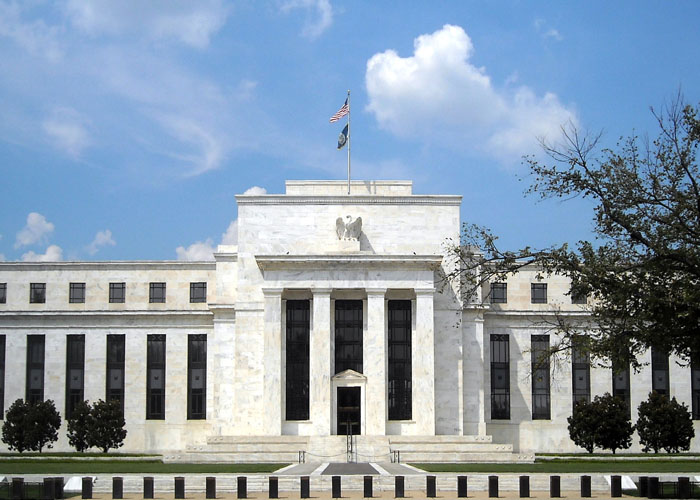
Overview
“Where has all the volatility gone. Where ole where can it be?”
The current myriad of troubling news on the world stage hasn’t led to open cries for a flight to quality to the USD, but it has led to little speculative interest in any other major currency. Supported by the generally negative geopolitical news and some positive employment data, the U.S. dollar has maintained its recent strength; all while the trend of subdued implied volatility has reached record depths. No major currency pairing has 1 – 3 Month At-the-Money implied volatility above 7%; and for many major pairings implied volatility is at historic lows. The GBP and JPY seemed to be particularly calm, while the USD/CAD was among the pairings whose implied volatility changed the most, albeit falling 0.95%. In the last 2 weeks, the AUD/NZD was the pairing with the largest price movement; it climbed 1.65% for the week. Unfortunately, we were not involved. Even Michael Jordan missed a few a shoots.
As expected from an environment with such low implied volatility, price fluctuations have also fallen to a record low this year. The JPMorgan Chase & Co.’s global FX Volatility Index dropped to 5.3% from last year’s high of 11.8%. Trading volumes have dropped as well. Currency-trading sales at the 10 largest global banks declined 9% from 2013, according to industry analytics firm Coalition Ltd.
USD
The U.S. dollar ended last week with gains against all majors, except the AUD. Higher U.S. Treasury yields and an unexpected drop in unemployment applications to an eight-year low buffered the greenback. Following last month’s surprisingly robust payrolls increase (Remember that 288,000 figure?), this is strong indication that the U.S. labor market is gaining momentum – despite the persistently low participation rate. Expect market dullness to continue early this week until U.S. GDP figures are released and FOMC meeting takes place on Wednesday. With the addition of nonfarm Payrolls numbers which are released on Friday, the data should help determine whether this mild dollar strength will be sustained by fundamentals.
Not much is expected from this week’s FMOC meeting, except a confirmation that QE will end following the October meeting, which is not a surprise anymore. Attention will focus particularly on any line regarding the current assessment of the labor market, a barometer of when rates will be hiked. While labor market indicators had been for the most mixed, the main indicator, Nonfarm Payrolls, will be released after the meeting, which signals the FED will likely maintain previous meetings’ wording. In that case, USD can suffer a setback late in the week on diminishing expectations of a rate hike. If the wording changes, however, and the FED eases its view on employment recovery anyway, the USD will likely get a boost.
RUB / Emerging Markets
While implied volatility in the majors has subsided, tensions caused by the downing of Malaysian Air Flight MH17 have buffered implied volatilities in European emerging markets. USD/RUB 1-Month implied volatility is 10.40%.
Bloomberg reports that Merkel is pushing EU leaders to sign off on measures against Russia by the end of next week and is prepared to accept curbs on her country’s technology exports to win support. Russia’s Foreign Ministry responded by saying the EU’s move shows Europe wants to end cooperation with Russia on anti-terrorism, weapons of mass destruction and organized crime. Western powers should exercise some caution. There is talk of an energy embargo in Moscow, which even a short-lived, could likely plunge continental Europe, if not the global economy, into another recession. Obviously, it would be painful for Russia as well; energy represents a majority of Russia’s exports.
While the creation of an attractive RUB Enhanced Yield structure is possible, my strong suggestion is to stay away from a RUB at this point. Frankly, implied volatility is not high enough to sell options, and a delta position would be fool-hearty.
CNY – China
The country released two measures of unemployment; they had a divergence of almost 1%. Considering China is the world’s second-largest economy; it’s a significant variance. One ministry said the registered urban jobless rate was 4.08% at the end of June, two days after another agency said the urban jobless rate was 5.05%, based on a 31-city survey. Confused? You’re not alone. Nevertheless, it appears that efforts to avoid a hard landing to the economy are working. The PMI rose to an 18-month high of 52.0 in July from 50.7 in June. Great news, if you can trust the numbers.
China’s benchmark money-market rate fell amid speculation the supply of cash will improve following subscription periods for after ongoing initial public offerings of five large IPOs. Bloomberg reported that about 30 billion Yuan of the People’s Bank of China’s repurchase contracts are scheduled to mature this week, after 18 billion Yuan of redemptions this week. So, liquidity should increase this week.
EUR
Eurozone
It should be acknowledged that consumer and business confidence, particularly for Germany can quickly become weakened by the Ukraine situation, and the EUR could nosedive (In fact, some suggest that it is starting to get hit). If things continue to heat up in Ukraine, the Eurozone could face a serious threat to growth and prosperity. It would be the first since the peripheral debt crisis. I question how much can a currency take?
That said, for now the affects aren’t apparent. Although new orders were hit by the Ukraine crisis, the Markit Eurozone composite index still rose to 54.0 from 52.8 in June, a 3-month high. France is stagnating (Which is nothing new), Germany is improving, and peripherals are at the fastest pace since 2007.
Although it’s a tiny improvement and for only a single month, the ECB reported private sector lending is -1.7% m/m in June y/y, which is less than the -2% of May y/y, and M3 money supply grew 1.5% annualized, which is more than 1% in May. However, there are two countries that have dire lending contractions—Irish lending fell 10.8% y/y, and in Spain, lending is down 9.0% (after -10% or more each month over the entire past year).
Australian dollar (AUD)
Improved sentiment toward the global economy and HSBC/Markit showing that China’s Purchasing Managers Index advanced to 52.0 in July from June’s figure of 50.7 concerns eased that the world’s second largest economy was slowing down. This broadly strengthened the AUD against its major peers, and the AUD advanced to a three-week high against the USD pushing above the 94 cents level. Additionally, the Australian dollar gained strength after Reserve Bank of Australia Gov. Stevens said he is content with monetary policy for now. To paraphrase, “If it ain’t broke, don’t fix it, Mate.”
Great British Pound (GBP)
Growth remained strong in Q2, and the level of real GDP has finally surpassed its previous peak. At least initially, the economy’s uptick was accelerated by consumer spending. Don’t expect it to continue its brisk pace for Q3 and Q4. In fact, retail sales already point to some softening. Nevertheless, in the view of most, the Bank of England will commence a tightening cycle in the first half of 2015.
Canadian Dollar (CAD)
IMF world economic outlook prediction suggest that Canada’s economy is expected to expand by 2.2% in 2014, 0.1% of a point slower than previously thought and in line with the Bank of Canada’s latest forecast. Like the AUD, another commodity based currency, geopolitics have been a core focus on the CAD. The loonie has registered gains amid rising metal prices and manufacturing reports from China and Europe. However, with the no apparent will from the Bank of Canada to raise rates, the juxtaposition with USD will favor the greenback.
Canadian dollar has been steady, trading within 85-point ten-day range. A break of the range will be an important indicator. Technicals warn of USD/CAD upside risk.
Japanese Yen (JPY)
Japan’s trade deficit ballooned to ¥Y822 billion in June for the first half of 2014, which is the biggest deficit since records began in 1979. Analysts try to blame Abenomics, but the real reason is ending nuclear power and substituting energy imports.
July’s PMI was down to 50.8 from 51.1 in June, implying weak exports and low domestic demands (after the sales tax hike) are headwinds for Japanese economy. BoJ has already anticipated and communicated the current slowdown in consumer prices, and the June inflation report didn’t trigger speculations in favor of additional monetary stimulus. According to Bank of Japan minutes from the June meeting, current easing is having the intended effects. Policymakers signaled continued easing until the 2% inflation target is stable.
Mexican Peso (MXN)
Mexican policy makers were unanimous in their decision to leave interest rates unchanged this month, with most saying the economy showed signs of picking up without pressuring inflation. The central bank had reduced its growth forecast for this year in its May 21 quarterly inflation report to between 2.3% and 3.3 % from a previous estimate of 3% to 4% after the U.S. economy shrank in the first quarter. Bloomberg forecast Mexico will grow 2.7% this year; down from 3.4% at the start of the year, they expect growth to accelerate to 3.8 % in 2015.
Government raised spending by 13% in the first 5 months of 2014 and plans to run a deficit of 15% of gross domestic product for the year.
Tradersdna is a leading digital and social media platform for traders and investors. Tradersdna offers premiere resources for trading and investing education, digital resources for personal finance, market analysis and free trading guides. More about TradersDNA Features: What Does It Take to Become an Aggressive Trader? | Everything You Need to Know About White Label Trading Software | Advantages of Automated Forex Trading



































